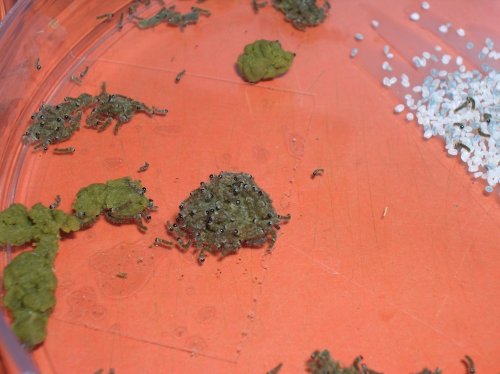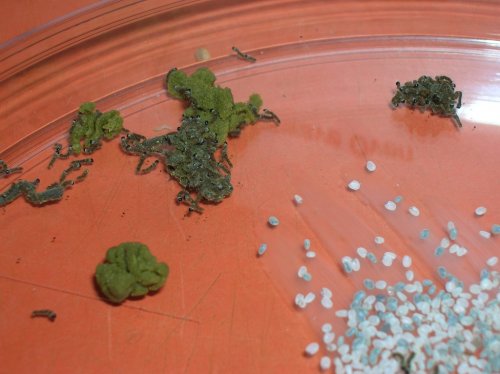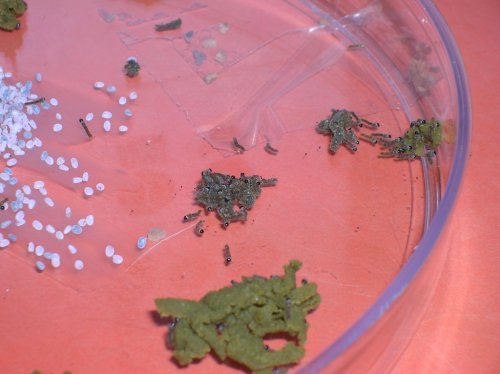Nicodemayo
Avid Member
Well alittle over a week ago i received 1000 silkworm eggs glued in a petri dish. Ive never done this before and I was amazed how easy it was to hatch them. Whats even more amazing is that ive had them on top of my computer at a constant 78-82 degrees and after hours of playing call of duty 4 (pcs heat up ALOT when gaming) and forgetting they were on my comp i remembered, shot the temp gun at them and they were at 90 degrees. I thought for sure they were dead. Another night, my comp turned off and my room got down to 68. These guys seem to be way more resilient than what i have read about them. They started to hatch last night and when i woke up i was amazed with how many more have hatched, so far, i would say 60% of them have hatched and they're all over the place in there. Im going to wait another 6 hours or so before i feed them but my question is, for those of you hatch them alot, whats the best way to feed/handle the hatchings? Coastal recommends grating a small layer on them and transferring them after another 24hrs while mulberry farms says to make a small band about the size of a pencil in the petri dish and to keep them in there for days until you transfer them. What have you guys found to be the method with the best yield?
Thanks!
Nic
Thanks!
Nic
Last edited:





